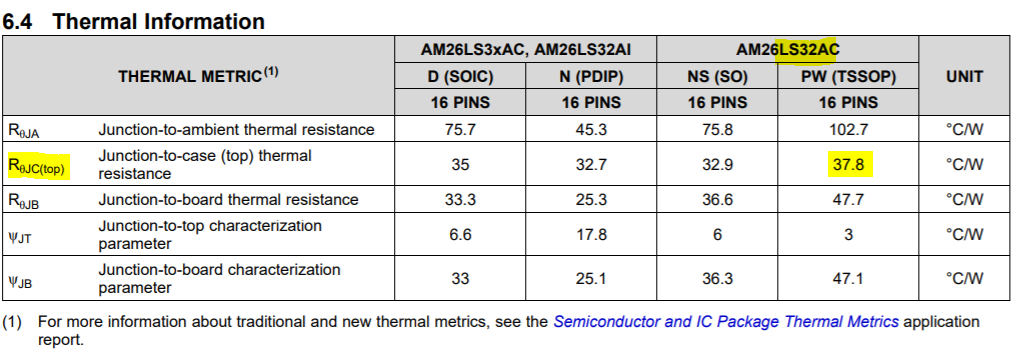Hi
My customer want to calculate Tc of AM26LS32AC(Differential Receiver) from datasheet.
The question is at the end. Let me explain the situation first.
■ Conditions
* The input voltage Vcc of the differential IC is 5.1V.
* Expected to be 95 ° C at maximum ambient temperature.
* The above temperature is the temperature when the differential signal is open and 2.73V and 2.37V are input to the differential terminal.
From the data sheet, we will calculate the allowable value of Tc as follows.
(1) Input power to differential IC: Icc × Vcc ※ Icc and Vcc will be calculated at maximum values.
(2) Input power when differential signal is added: Ii(= differential input current) x Vi x 6 input terminals ※In consideration of margin, Ii is calculated not by pulse but by constant-on.
(3) {(1) + (2)} × 108 ℃ / W ※ Calculate by this method in order to take margin into account.
With the above background, please confirm the following items.
① Can the allowable temperature of Tc be calculated from the above
② Maximum value of Icc: I㏄_max = 70mA, is it correct?
③ Maximum value of Ii: Ii_max = 1.2mA, is it correct?
④ Thermal resistance: Rth_j-c (= thermal resistance between junction and case) = 108 ℃ / W, is it correct?
------------------------------------------------------------------------------------------------------------------------------------------------------
In my own opinion, thermal resistance only shown in DS is Rth_j-a(= thermal resistance between junction and ambient) =108 ℃ / W.
But how can I get Rth_j-c from calculation?
Jo


